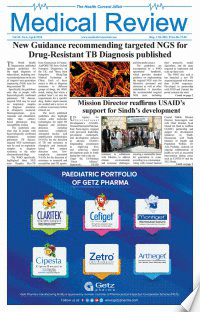The value that the generic drug industry brings to the U.S. healthcare system is indisputable.
Heather Bresch[1]
————————————————————————————————
Cost of therapy is one of the major reasons for non-compliance with the doctor’s advice by a patient, which results in a poor therapeutic outcome. Using generics could help in reducing cost, minimize the chances of drug-drug interactions and improve the quality of prescriptions. Internationally, recommendations for low-cost generics are enormous. Of course, such a phenomenon based upon merit.
In USA, it is reported: “Generic drugs have saved US$1.67 trillion to the health care system in the last decade, generating US$253 billion of savings in 2016 alone. Medicare savings amounted to US$77 billion (US$1,883 per enrollee) and Medicaid savings of US$37.9 billion (US$512 per enrollee). Generics account for 89% of prescriptions dispensed but only 26% of total drug costs in the US”[2].
In another report, the rationale for the use of generic drugs was advocated: “Generic drugs can sometimes be misunderstood as subpar or not up to the same quality standards as name-brand prescription drugs. This is unfortunate because generic drugs are not only of the same high quality as name-brand prescriptions, but they usually cost much less (approximately 80-85 percent less). According to the Food and Drug Administration (FDA), USA, generic medications save US$3 billion every week and more than US$150 billion annually”.
The NHS (UK) recommends, “Generic prescribing is the preferred option in the vast majority of cases, on the grounds of cost and the ability to source drugs as generic prescribing allows pharmacists to choose from a range of procurement options”[3]–[4]. “Generic-drug law refers to a statute that allows pharmacists to substitute a generic drug for a brand name drug under specified conditions. In the United States, many states have enacted generic-drug laws to ensure that less expensive generic drugs are available to consumers.”[5]–[6]
In Pakistan, hardly few products are available under their generic names. Either the drugs are available from the patent owner or its generic version are branded and marketed by many local or multinational companies. There are many versions of every molecule available in market. For instance, there are approximately 86 branded versions of amoxicillin Capsule (500mg)[7]. Sometimes, various branded generics for a product runs into hundreds. A patented Brand drug may cost 10 times more than its branded generic versions.
In Pakistan, Tsunami of branded products of a molecule hardly leaves any space for the availability of drugs under their generic names. Prescriptions by brand name create multiple problems. For instance, it creates difficulty for prescribers to remember different names unnecessarily, and for medical stores (pharmacies) to have many versions of the same molecules. Moreover, prescriptions’ errors occur due to the similar brand name of different drugs.
77% of people, in Pakistan, pay for their healthcare from their pockets. Besides, more than 50% of Pakistanis make less than 2US $ per day. In this context, the generics could help in reducing the cost of treatment and reducing healthcare expenditure. According to the World Bank’s latest report, per capita, health spending is US $36.2 which is below than the WHO’s low-income countries benchmark of US $ 86.[8]
When discussed with the selected group of healthcare providers, the reasons for not prescribing drugs by their generic names in Pakistan, they raised following questions: (1) Are all drugs claiming the same molecule bioequivalent? (2) Why are many branded generics too cheap to be effective? (3) Do the generic products meet the same batch requirements for identity, strength, purity, and quality? (4) If they prescribe generic, the chemist has a choice to give any product of their choice, therefore, to ensure that a patient gets the most suitable product; the doctor prescribes a product by its brand name. Does it sound irrational? (5) Most of the brand names are similar causing confusion and sometimes dangerous. Are drugs with such confusing names not available in Pakistan? (6) Are the generic products identical in strength, dosage form, and route of administration? (7) Are the generic products manufactured under the FDA’s good manufacturing practice regulations required for pioneer product?
Despite all the above, it is interesting to note that Pakistan introduced The Drugs (Generic Names) Act in 1972. Hence, there were strong visionaries who pioneered support for prescribing the drugs by their generic names. However, the Act was repelled and replaced by the Drug Act 1976 that has opened the door for branded products again. Conspiracies theories blamed different reactionary groups for this U-turns.
Again, in the year 2017, tide has turned in favor of prescribing by generic names in Pakistan, it was reported recently, “After having been discussed for over a year, the health ministry has now finally decided medicines should be prescribed on generic names with details of the prescribing physician. However, the recommendations agree that doctors should be allowed to prescribe medicines according to brand name in special cases. Prescription on generic, rather than brand names, would give patients the choice to go for less costly drugs besides lead to a healthy competition between brands leading to reduction in prices.”[9]
References:
[1] http://investor.mylan.com/news-releases/news-release-details/mylan-ceo-heather-bresch-elected-chair-generic-pharmaceutical
[2] https://accessiblemeds.org/resources/blog/2017-generic-drug-access-and-savings-us-report
[3] file:///C:/Users/imhussain/Downloads/Generic%20Prescribing%20Position%20Statement%20-%20Oct%202016.pdf
[4] https://www.nhs.uk/conditions/medicines-information/
[5] https://definitions.uslegal.com/g/generic-drug-law/
[6] https://www.fda.gov/drugs/resourcesforyou/consumers/buyingusingmedicinesafely/genericdrugs/ucm167991.htm
[7] http://www.druginfosys.com/availablebrands.aspx?query=500%20mg&form=Caps&drugCode=51&drugName=Amoxicillin&Ing==1
[8] Economic Survey of Pakistan 2016-17, Chapter 11, Page # 187
[9] https://tribune.com.pk/story/1672829/1-back-basics-prescribe-drugs-generic-rather-brand-name/


